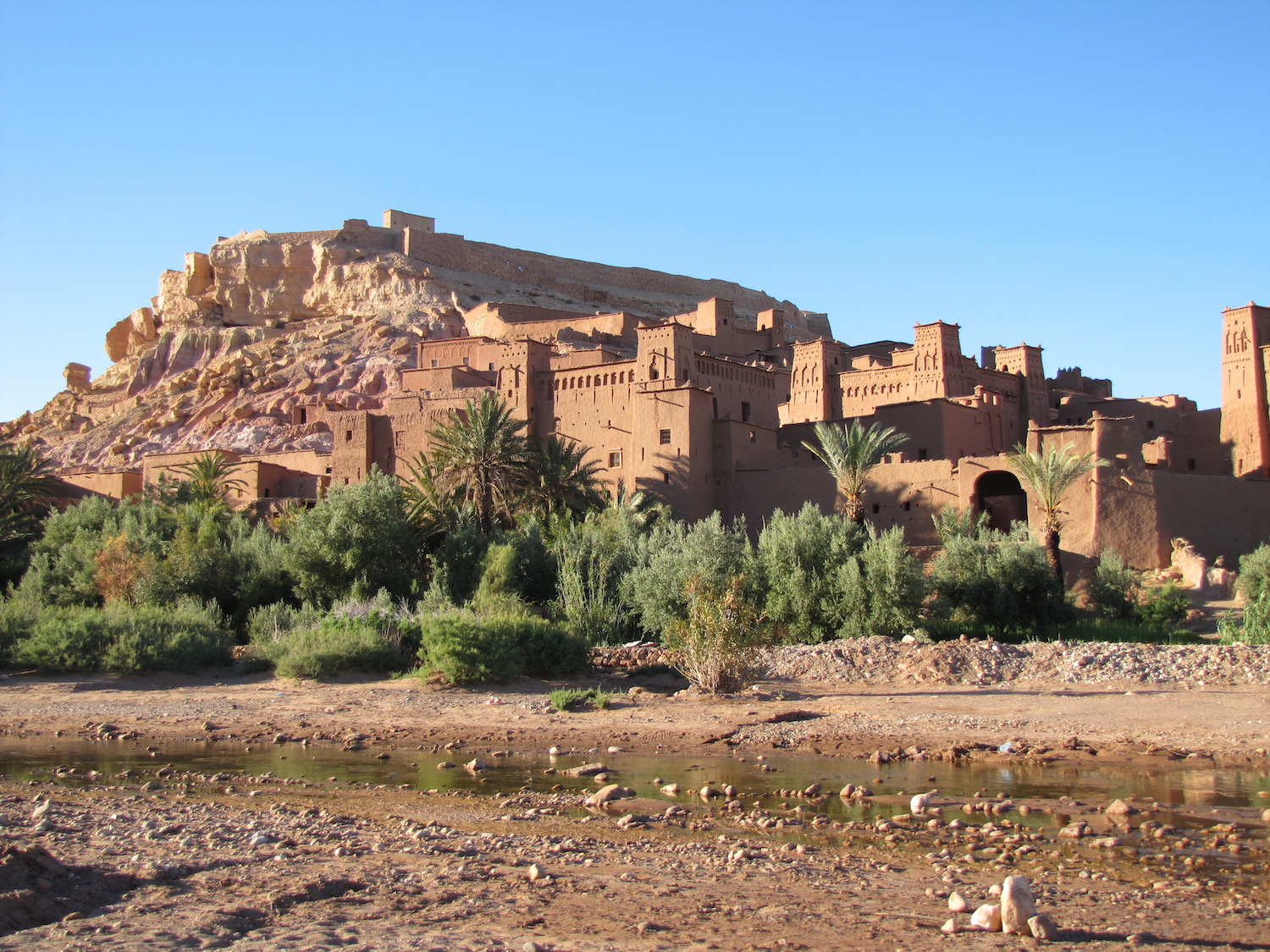
From the tallest peak in the High Atlas Mountains to the most tucked away corners of Marrakech’s Old Medina, Morocco is a country full of breathtaking beauty and cultural wonders. Its location in Northern Africa, proximity to Europe, Arabic influences, and Berber roots all play a part in shaping the unique traditions and customs that make up the distinctly Moroccan culture we see today. With a country so diverse and geographically varied, it’s impossible to pinpoint one reason to visit Morocco. Here are 5 compelling reasons to make a Morocco vacation next on your travel bucket list:
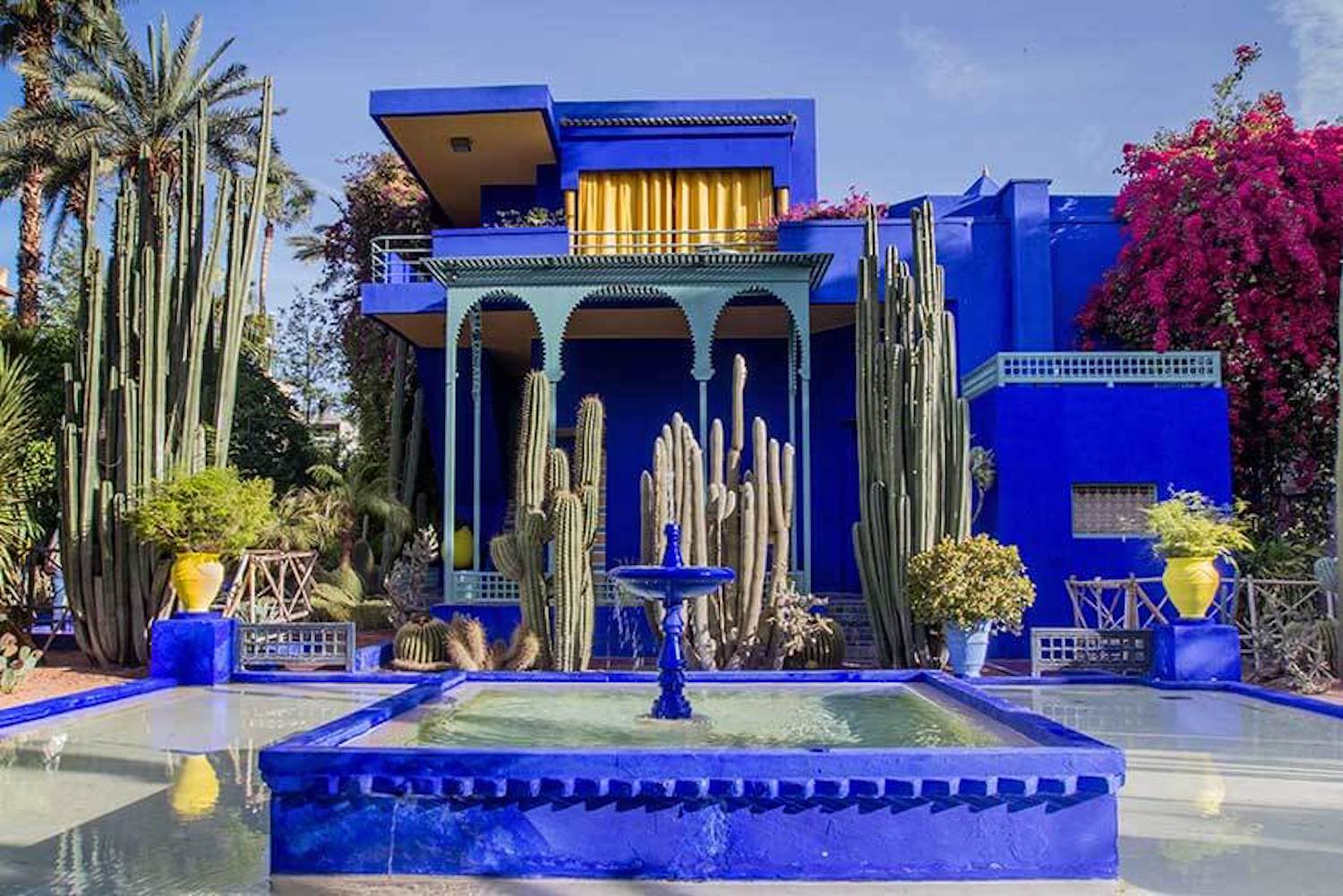
Above all else, Moroccan culture is the country’s most fascinating characteristic. Influenced by Arabic, European, North African, and indigenous Berber traditions, Morocco honors its multicultural roots through language, art, religion, and cuisine.
One of the most surprising aspects about Morocco is language. While the official language is Arabic, it’s possible to converse with a Moroccan in four different tongues (Arabic, English, French, and Spanish). Due to the instatement of protectorates in the early 1900s, French and Spanish is widely spoken throughout the country. Although still not as prevalent as the former two, English is quickly becoming popular thanks to tourism. The multilingualism of Morocco makes communication-in some form-easy for many travelers.
Art can be admired at every turn in Morocco. Moroccan souks are a goldmine for handmade carpets, pottery, and leather handicrafts that come from the local tanneries. When you’re ready to move away from the hustle of persistent shopkeepers, Majorelle Garden doubles as an artistic masterpiece and welcome retreat. Created by French artist Jacques Majorelle, the garden incorporates striking cobalt blue and lemon-yellow hues that offset the ponds, fountains, and 300-plus plant species. Majorelle himself called the garden his “most beautiful work.”
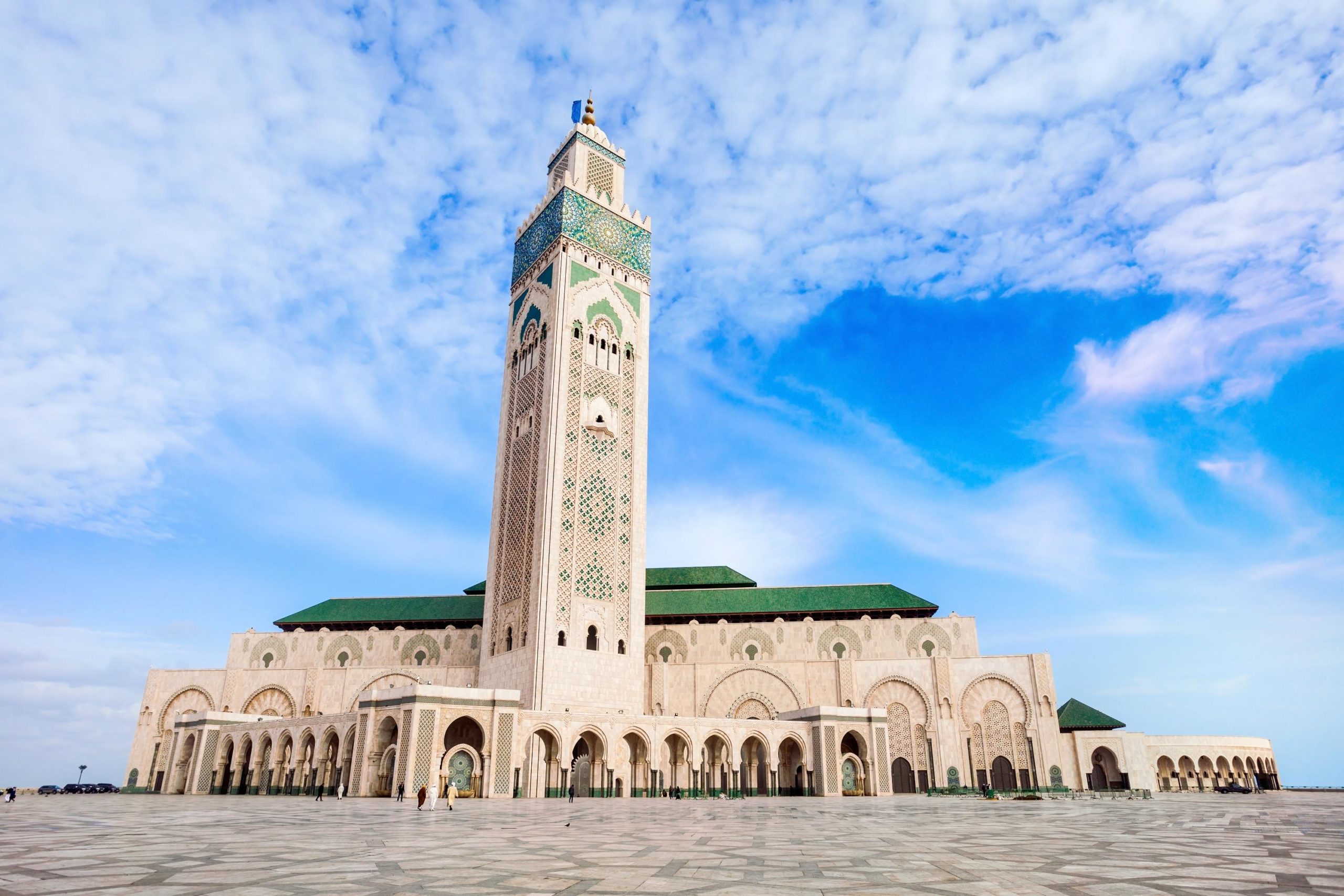
Morocco is almost exclusively Muslim, and the importance of religion in daily life is apparent in the number of mosques. If you only visit one, make it the Hassan II Mosque in Casablanca. With enough space for 105,000 worshippers, the dominating white and turquoise-tiled mosque is the second largest in Africa. It boasts a magnificent location overlooking the Atlantic Ocean, as well as some extraordinary features such as a heated floor, hand-carved wood and granite details, and a polished marble interior.
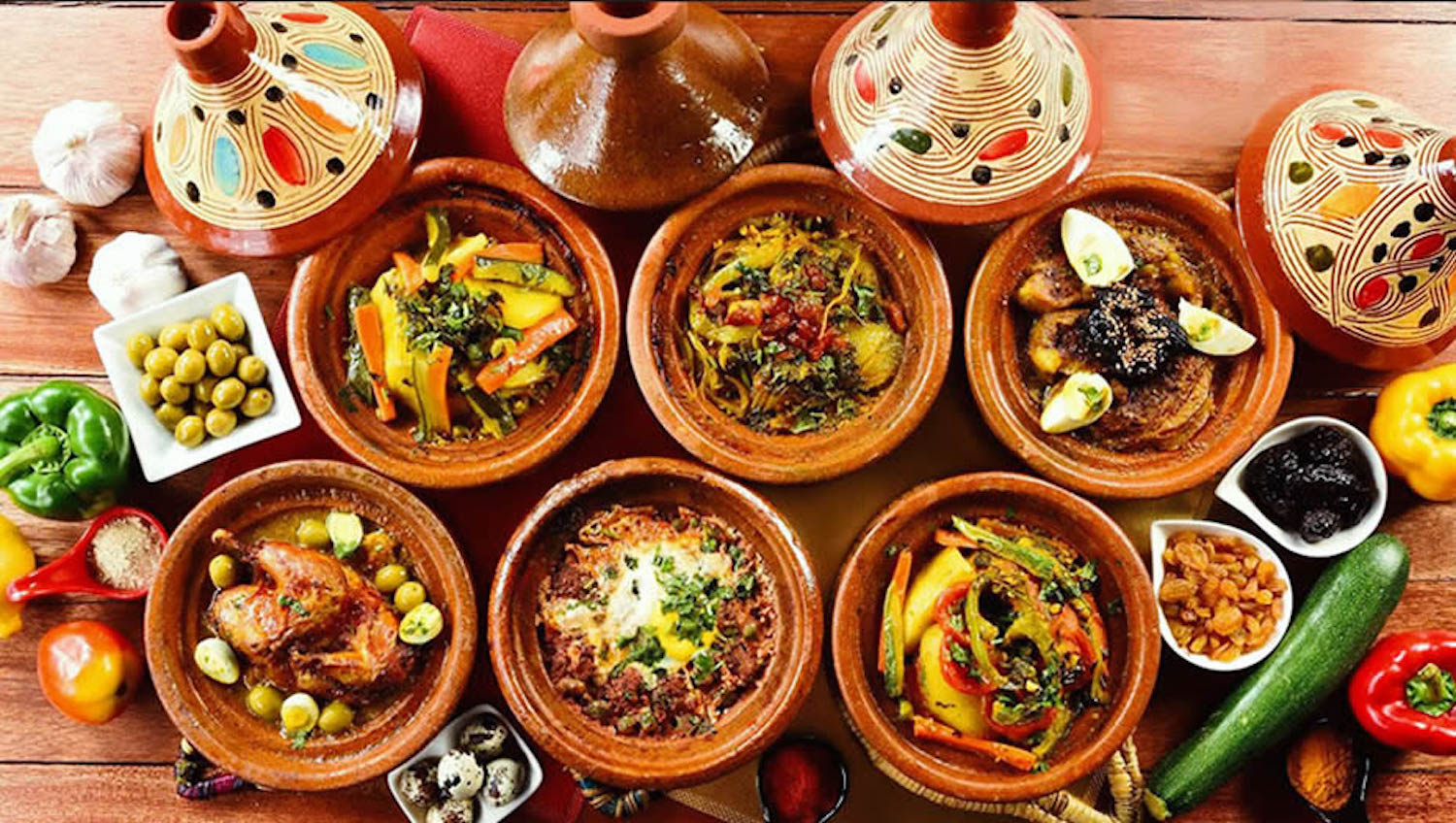
International Cuisine
Similar to Moroccan culture, the cuisine has been influenced by other cultures and nations over the centuries. With staples like lamb, chicken, seasonal vegetables, and couscous, Moroccan cuisine is very healthy. Moroccan food relies on common Arab spices like cumin and paprika, and takes advantage of its dual-coast location along the Mediterranean and Atlantic by incorporating plenty of seafood. The French influence inspired Morocco’s cafe, wine, and patisserie culture, creating a European vibe in the most unexpected places. Despite all its culinary influences, the most famous dish in Morocco, tagine, hails from the country’s first inhabitants, the Berbers. Tagine refers to the clay pot in which the slow-cooked stew is prepared, traditionally made from fish or poultry, vegetables, dried fruit, nuts, and spices.
The hot temperatures in Morocco make freshly-squeezed orange juice a choice beverage. Oddly enough, hot mint tea is equally as popular. You’ll find juice in every cafe, restaurant, and street stand and mint tea is an option just about everywhere–including in the middle of the desert, served by your Berber hosts!
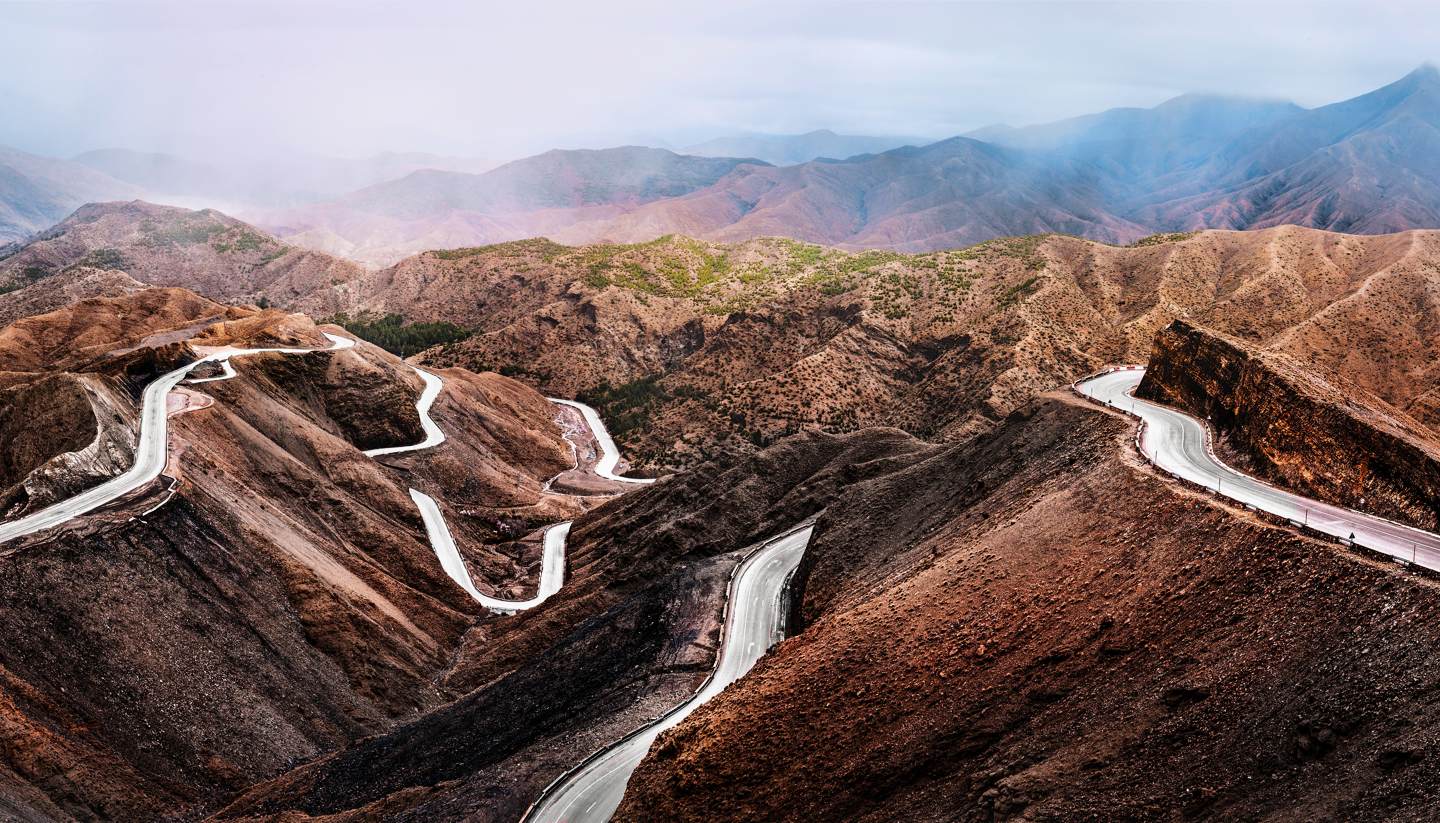
Breathtaking Landscapes
Morocco hosts nature’s trifecta; ocean, mountains, and desert. The mighty Atlas Mountains make up the country’s spine with the Atlantic Ocean to the west and the Sahara Desert to the east.
With roughly 1,500km of coastline along the Atlantic, Morocco is a somewhat undiscovered surf haven. Taghazout is just one of many laid-back fishing villages with access to a consistent surf break.
Several hours outside of Marrakech, the rugged High Atlas Mountains tempt experienced hikers with ambitions of summiting Mount Toubkal (4,167 meters), North Africa’s highest peak. For those looking for less challenging treks, trails connecting Berber villages in the Ait Bougmez valley hit natural and cultural high notes.
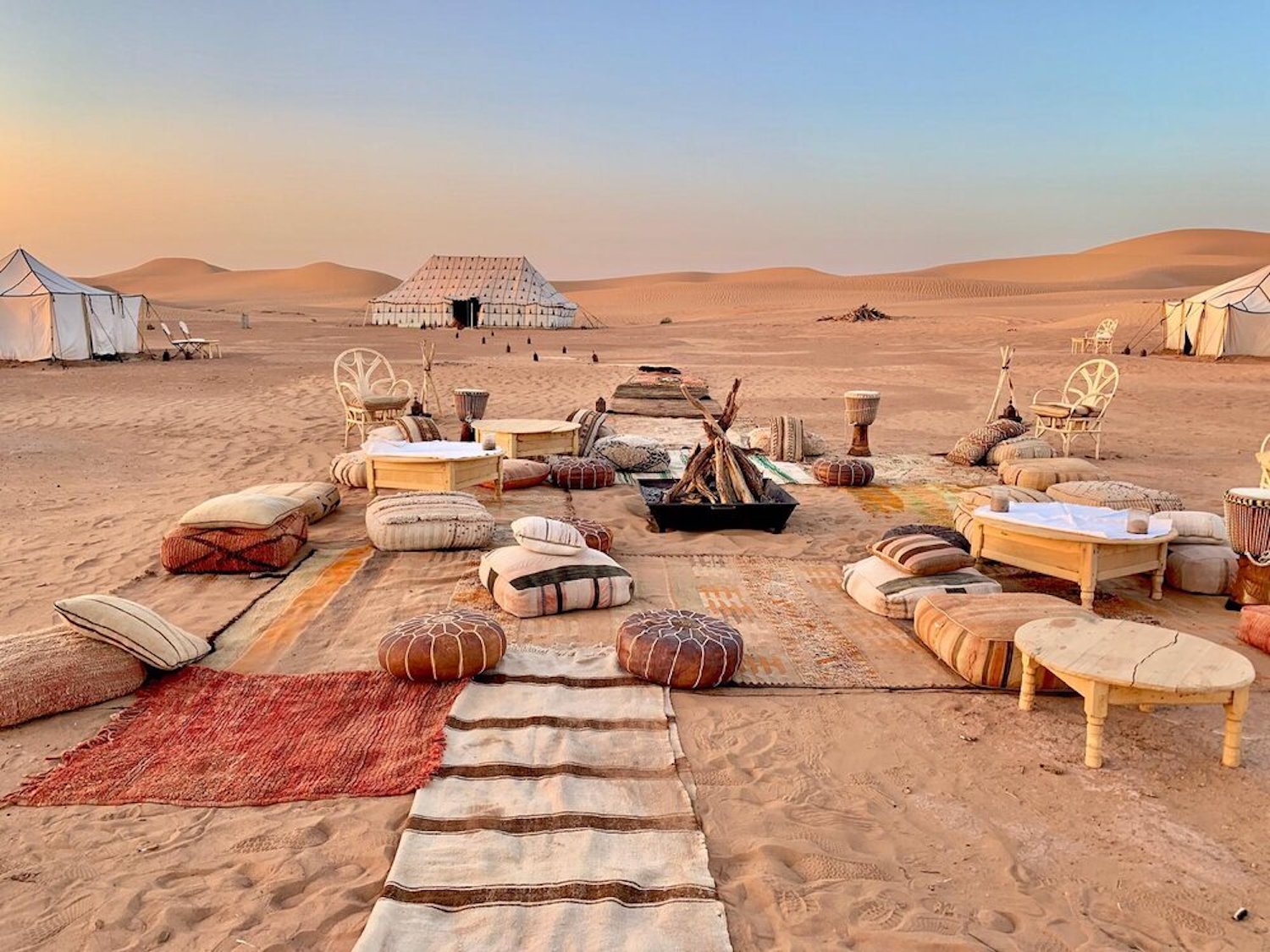
And, of course, Morocco serves as a gateway to the Sahara Desert. The quintessential Morocco travel experience entails embarking into the desert via a camel caravan led by local guides. There’s nothing quite like spending the night surrounded by mountainous sand dunes, sipping mint tea outside your canvas tent, and gazing up at the clear night sky, illuminated with countless twinkling stars.
Equally impressive are Morocco’s man-made landscapes. The UNESCO-listed fortified village of Ait-Ben-Haddou is a spectacular example of the famous earthen clay architecture of southern Morocco.
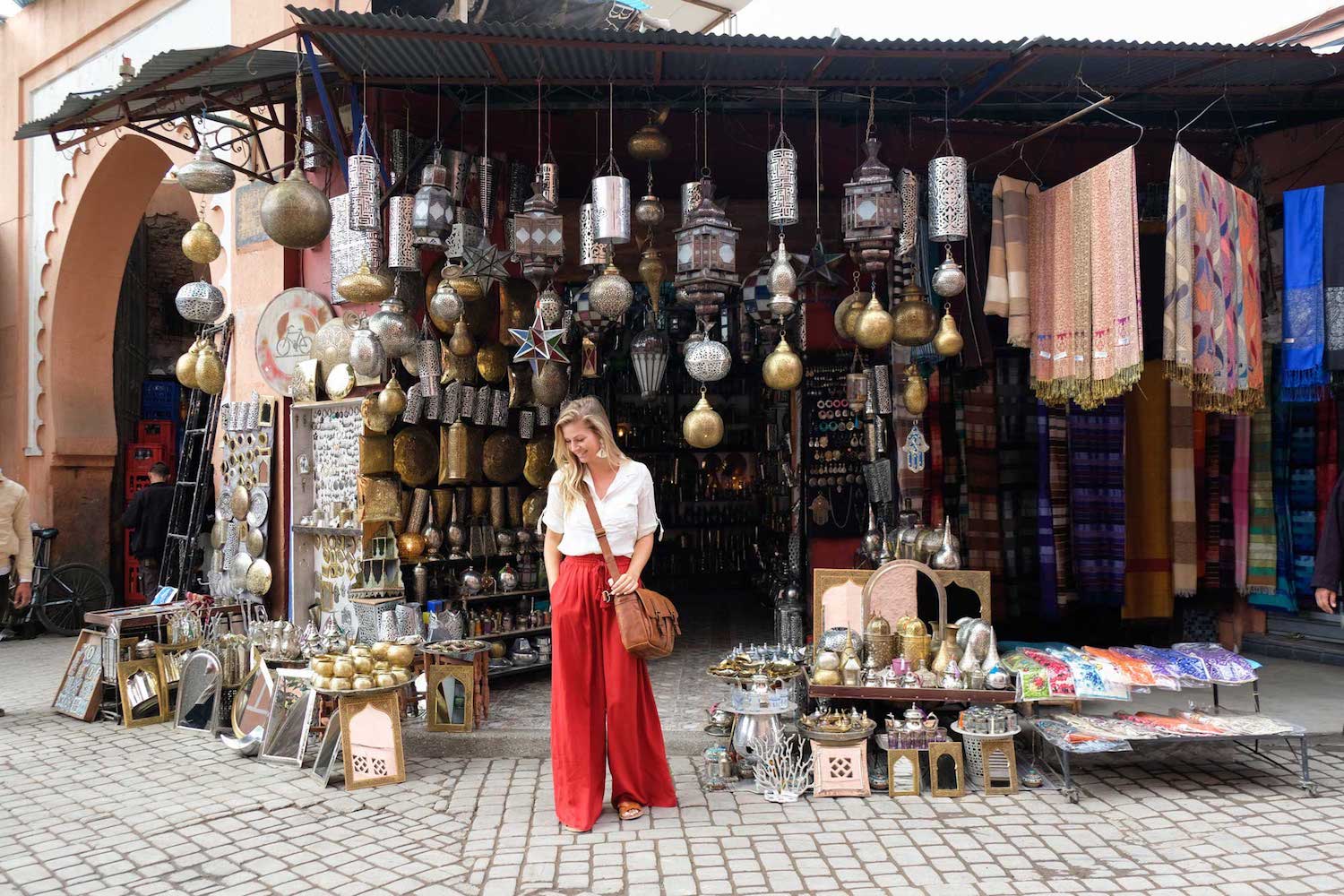
Bustling Souks & Old Medinas
Fortunately for tourists and travelers, Morocco’s magnificent old medinas and souks are often in the same place. Medina simply means “city” or “town” and refers to a historic section of the city, typically surrounded by high walls. A souk is a marketplace, and these are often found folded into the maze-like pathways of the old medinas.
From Marrakech to Fez, Morocco is peppered with lively souks stacked high with locally made goods. One of the best things to do in Morocco is allow yourself to get lost in the labyrinths of an old medina while you search for the perfect carpet, argan oil, or babouche (Moroccan slippers).
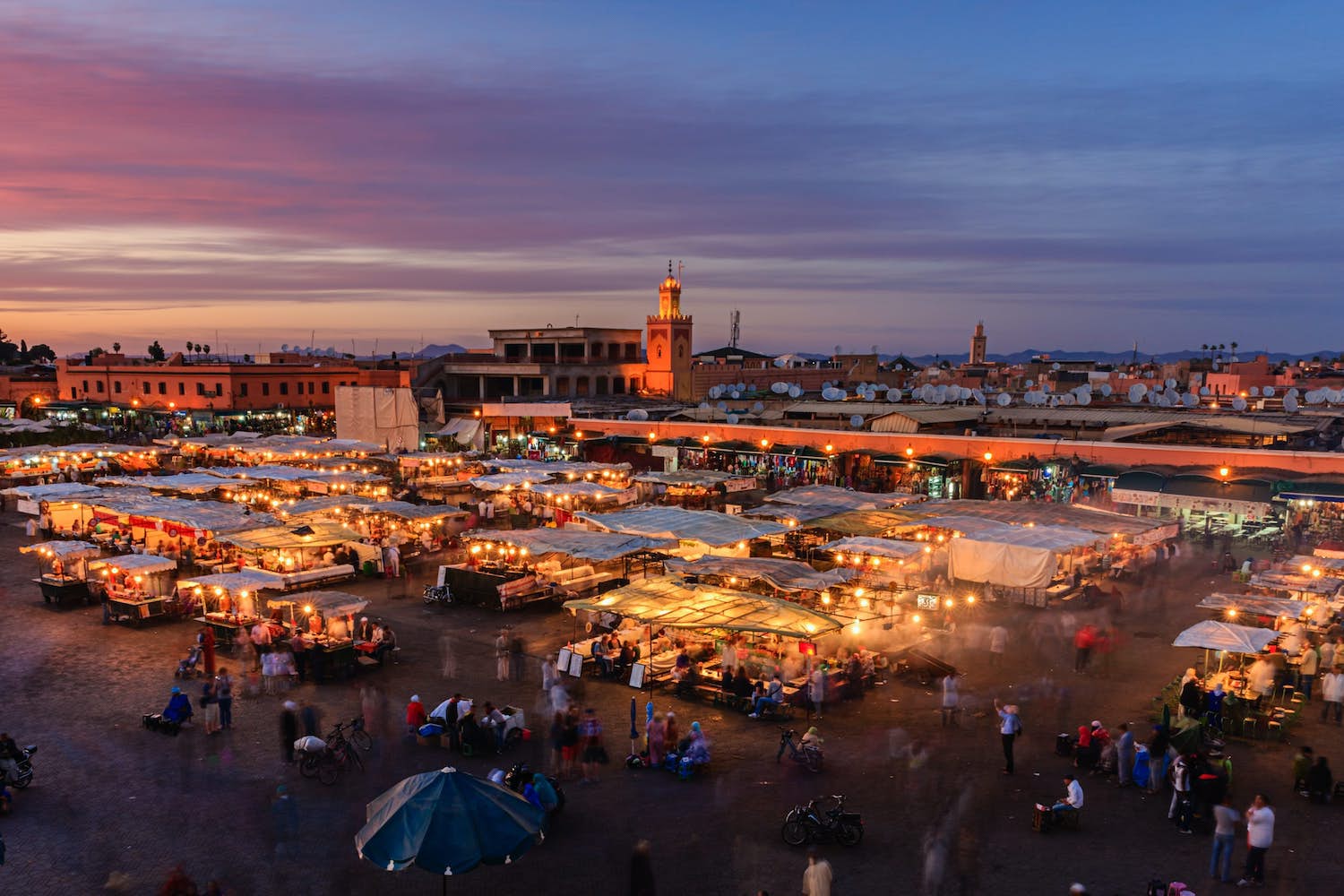
Marrakech hosts one of the two most famous medina and souks in Morocco. Hit the vibrant Jemaa el-Fnaa square, which doubles as the entrance to the famous souks and Old Medina of Marrakech. Keep your eyes peeled for snake charmers and street entertainers and refuel with bags of nuts, dried fruit, and freshly-squeezed juice.
Fez claims one of the best-preserved medinas of the Muslim-Arab world and another can’t-miss souk. The former-capital city reached its height in the 13th and 14th centuries and is still considered to be the cultural heart of present-day Morocco. Spend a day getting lost in the multiple souks within the old city walls, soaking up the organized chaos, and stocking up on souvenirs.
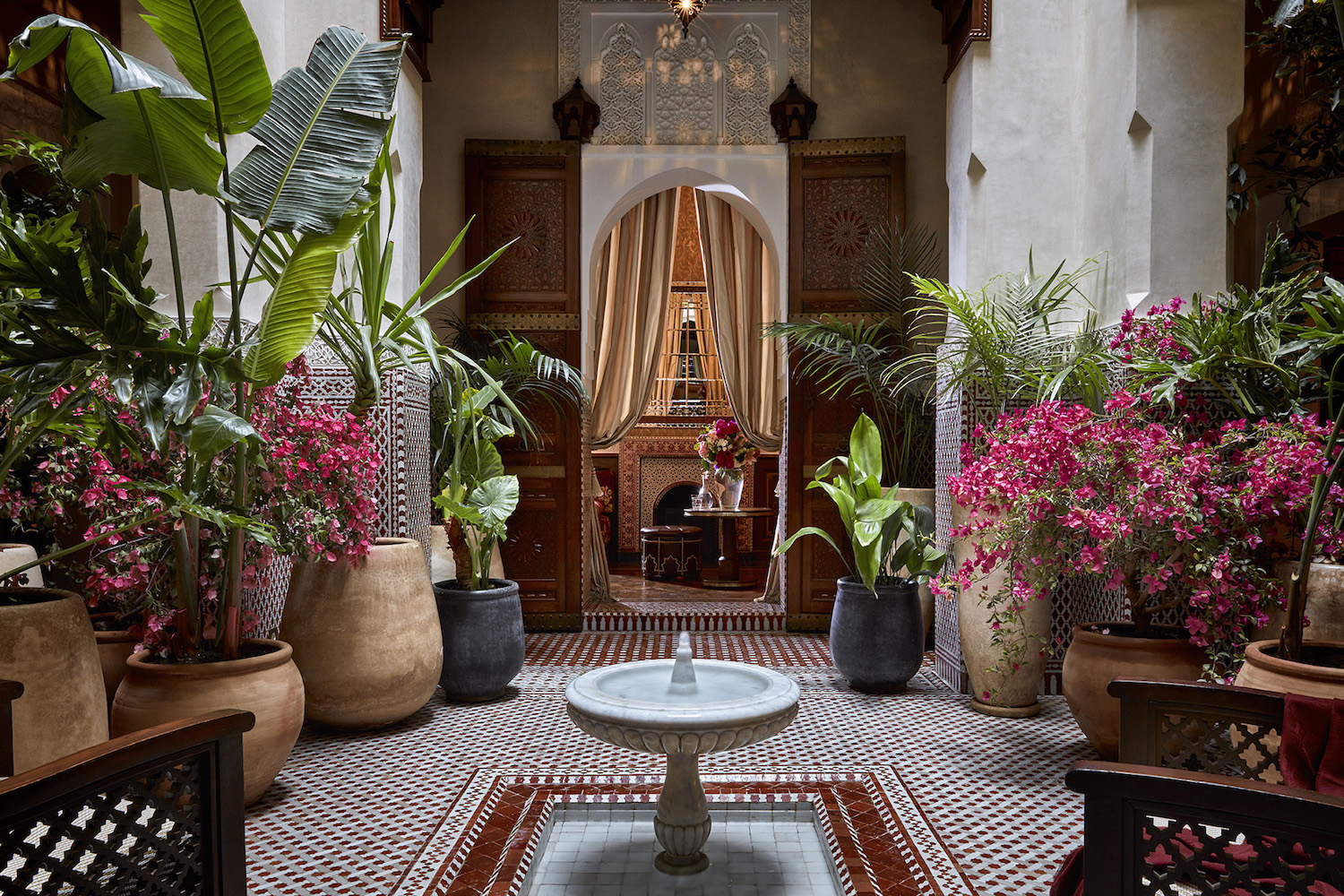
Traditional Riads
No Morocco vacation is complete without a stay in a riad. In fact, many travelers prefer the authenticity and charm of the revamped mansions to traditional hotels. Riads are the former-homes of wealthy Moroccans that have been converted into multi-level, boutique guest houses. Built around elegant, open-air courtyards (typically with a fountain), every detail of the elaborate tile mosaics, intricate pillar carvings. and soaring archways reflect Moroccan style. Many riads also have rooftops decks, created solely for the purpose of sipping mint tea while you soak up the views and discuss the exciting day ahead (or relive the epic day you just had)!
Get in touch to join our group travel to Morocco in September
and experience Moroccan magic first-hand!